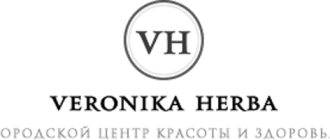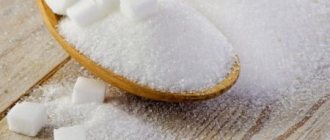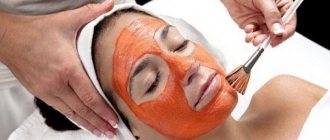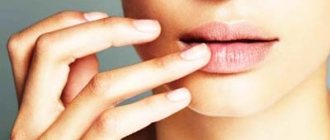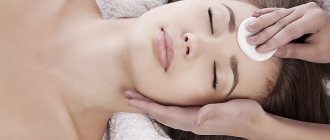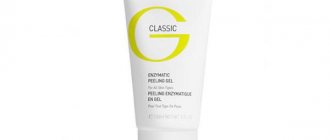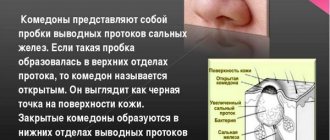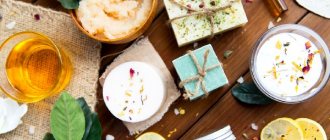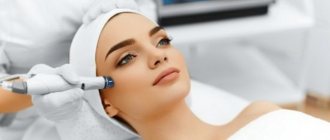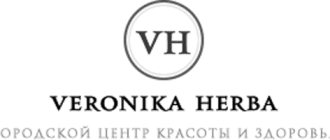Technology
Regardless of the type of procedure, the technology used in each case is approximately the same. Foot peeling is carried out according to the following scheme:
- Treating the foot with an antiseptic.
- Steam them in warm water with the addition of herbal decoctions or essential oils for 20 minutes.
- Removing the first layer of keratinized skin using a special brush or pumice stone.
- Dry your heels thoroughly.
- Applying a foot scrub or a solution of active acids to the skin.
- Rinse off after 20 minutes with warm running water.
- Applying rich cream.
Important! You cannot perform foot peeling if there is any damage to your feet: calluses, cracks or wounds.
Aspirin against corns on feet
Wrong choice of shoes, excess weight and excessive physical activity lead to repeated compression of the skin on the legs. The epidermis grows and thickens. Dry and hard areas of the dermis are formed, popularly called corns.
Acetylsalicylic acid will help get rid of the discomfort, pain and redness caused by corns. Reviews about the recipe for heels and against corns with aspirin are only positive. Therefore, it is definitely worth trying.
Prepare a bath before going to bed. For this:
- Mix 4 liters of water and 100 ml of vodka.
- Add 5 aspirin tablets, crushed to a powder.
- Soak your feet in the water for 25 minutes.
- Rub with a pumice stone and remove dry calluses from your feet.
- Add 5 drops of tea tree to a tablespoon of vodka and rub your feet with this mixture.
- Wear cotton socks.
- In the morning, rinse your feet with cool water and apply moisturizer.
To treat feet, perform the wrapping procedure:
- Prepare an emulsion from 1 tablespoon of vodka, 5 crushed ASA tablets and half a teaspoon of lemon juice.
- Spread the mixture over the surface of your feet, wrap in cling film and wrap in warmth.
- After 15 minutes, rinse your feet and brush with a stiff brush.
- Repeat the wrap after 2 - 3 days.
Efficiency
Regular foot skin care will help keep it smooth and elastic for a long time. Foot peeling leads to the following results:
- blood circulation improves;
- skin cell regeneration accelerates;
- aging processes slow down;
- small cracks heal;
- fungus of the skin and toenails disappears;
- aesthetic appearance improves;
- All layers of the epidermis, both upper and deep, are nourished.
Foot peeling not only helps to maintain the external beauty of the skin of the feet, but also eliminates fungal diseases and unpleasant odors.
Types of masks
Currently, there are a huge number of foot masks. Many masks affect our skin from several sides at once. Therefore, first we will talk about the types of masks, and then about folk recipes.
- Exfoliating masks are scrubs, which we have already talked about. We need to renew our skin. Such masks will relieve you of dead cells and corns.
- Softening masks. The skin on the legs, and especially on the feet, is subject to a lot of stress, so we often experience that the skin becomes rough and cracks. In such a situation, softening masks will come in handy. After all, every woman dreams of being the happy owner of soft, pleasant, smooth, charming legs.
- Nourishing and moisturizing masks. Often the skin on the heels cracks and dries out. In this case, moisturizing and nourishing masks will help you out. Many people advise doing them only in the summer. But I think you'll agree that skin requires care all year round.
Composition and features
For foot peeling, compositions containing various acids are used:
- fruit;
- dairy;
- and salicylic.
Each of them is guaranteed to restore elasticity and softness to the skin of the feet. I also use special socks, peeling rolls, scrubs, and peeling creams to care for my feet.
Features of chemical peeling include:
- Delayed result. There will be no effect immediately after the procedure, since the acids gradually start the regeneration process in the skin. Visible changes appear 3–4 days after the procedure.
- During this period, the skin on the feet begins to peel and peel off, as the active phase of epidermal cell renewal begins.
- After 6-7 days, dead particles are completely removed, and the skin on the feet becomes beautiful and soft.
- Chemical peeling for feet is a simple and safe procedure that you can even do yourself at home.
- Mechanical peeling helps with severe roughening of the skin. It can be used in combination with a chemical one.
We recommend: What is bodyaga and how to peel with it? Recipes and recommendations
Popular store brands
The modern market offers many different types of compositions for exfoliating dead skin layers of the feet. Both Korean and European brands, as well as domestic products, are popular.
Peeling “Bamboo and jojoba”, Gehwol (Germany)
The composition contains natural ingredients - jojoba wax, honey extract, avocado oil and vitamin E. Thanks to this, cream peeling allows you to:
- effectively but gently exfoliate the skin of your feet;
- give smoothness to the feet;
- activate cellular regeneration processes;
- stimulate blood circulation;
- fill the dermis with nutrients without provoking an allergic reaction;
- prevent early aging of the skin.
Sold in a 125 ml container, the average price is 1,550 rubles.
Snake skin and fat peeling, tianDe (China)
Contains snake fat extract, as well as vitamins C and E. Provides comprehensive care, while simultaneously cleansing and nourishing the skin of the feet. Allows you to remove accumulated impurities in the pores, moisturize the feet, soften the cover and even lighten the skin. According to reviews, after using this peeling, the texture is noticeably smoothed out and wrinkles are reduced.
Price for 100 ml – about 300 rubles.
Peeling with silicon and fruit acid, Premium (Russia)
Contains:
- lactic acid;
- silica;
- essential oil of sweet orange varieties.
As a result of using this composition, the skin exfoliates and softens, becoming more hydrated. The product combines the qualities of abrasive and chemical peeling.
Works very well in cases of corns and hyperkeratosis (excessive keratinization and thickening) of the feet. Recommended for use for the prevention of calluses.
The price for 100 ml of the composition is usually about 500 rubles.
Exfoliant Depilflax (Spain)
Removes rough layers on the legs, softens the skin, smoothes out fine wrinkles, and fights keratosis.
Recommended for use as a preparation for feet before a paraffin therapy session.
A 200 ml container can be purchased for approximately 650 rubles.
Pearl foot peeling Perlmutt-peeling, Gehwol (Germany)
The active composition contains:
- jojoba oil;
- panthenol;
- micropowder of mother of pearl;
- bisabolol;
- sea water.
Perlmutt-peeling from a German manufacturer is approved for use in diabetic foot syndrome.
The price of the composition is about 1400 rubles. for 125 ml.
Indications and contraindications
Foot peeling is used as a simple care procedure for the skin of the feet, in order to prevent the appearance of rough growths and cracks, and to get rid of existing problems.
Regular procedures will help make the skin of your feet and heels soft and smooth and maintain this effect for a long time.
The main indications for use are:
- dry flaky skin;
- increased sweating;
- fungal diseases;
- corns;
- small cracks;
- ingrown nails;
- tendency to calluses.
Attention! Like any procedure using chemical acids, foot peeling has a number of contraindications.
These include:
- dermatological diseases;
- open wounds (especially purulent ones);
- oncology;
- pregnancy and lactation;
- diabetes;
- viral diseases accompanied by fever;
- allergy;
- individual intolerance.
Before using a foot peel, be sure to consult a dermatologist.
TOP 6 cosmetic peelings from foreign and domestic manufacturers
Self-prepared peelings are certainly a good thing, but if you don’t have time to prepare the composition, or don’t have the necessary ingredients? It's simple - we buy ready-made peelings and scrubs, with fruit acids, for a specific skin type, taking into account individual problems. Which brands have proven themselves in 2020 as an effective means of rejuvenation, TOP-6.
Mediderma with almonds for sensitive skin. It is easy to use and has a gentle effect without causing redness or itching. The solution is applied to the skin of the body with a cotton pad in 2-3 layers, with a new layer applied after the previous one has dried. Contraindications: do not sunbathe or visit a solarium for 3 days. The only negative is the very high price - 7,000 rubles. Not for use by girls under 25 years of age.
Cedar salt body peeling Detox Natura Siberika . They contain a whole complex of useful plant substances: cedar oil, juniper, Siberian brine salt, which will not only make the skin elastic, but also cleanse it of toxins. Suitable for frequent use.
Shower pilin from Weleda with birch extract will help solve problems with “orange peel”, sagging skin, and also helps break down fat cells and remove excess fluid. It contains only natural ingredients: apricot kernel oil, birch leaf extract, sugar.
Body scrub “Perfect skin” “Black pearl”
Suitable for all skin types, has a lasting coffee aroma. The abrasive particles are ground apricot kernels and coffee beans. Does not leave a greasy film and perfectly tones the skin and improves its appearance. The price is about 220 rubles.
Clean line “Massage effect”
The scrub contains 12 types of natural essential oils, abrasive particles from crushed apricot kernels do not injure even sensitive skin, the thick creamy texture is perfectly applied to the body, softens and moisturizes even very dry and irritated skin. The price is about 160 rubles.
Soap body scrub “Ginger and lime”
It is free of parabens and silicones. Contains only natural ingredients: sea salt, essential oils, vitamin E. After use, no moisturizer is required; the scrub has a fairly oily texture, but gives an amazing lifting effect and rejuvenates the skin. The price is about 250 -300 rubles per 270 grams.
Which type of procedure should I choose?
There are quite a few methods of performing the procedure, which allows you to choose the most suitable one for each skin type. All methods have both advantages and disadvantages.
Types of peeling:
- mechanical;
- chemical;
- fish;
- enzyme;
- socks;
- Italian mittens;
- for pedicure.
Reference. Each of them can be used both in the salon and at home.
Chemical (Acid)
The method of chemical peeling involves applying acids to the skin and consists of three stages: preparatory, main and restorative. It is carried out in the following sequence:
- Examine your feet for damage.
- Antiseptic treatment.
- Application of a special composition.
- Washing off.
- Consolidate the result with a nourishing cream.
There are 3 types of chemical peeling for feet:
- surface;
- median;
- and deep.
The first 2 types can be used once a week, deep - once every 2-3 months. The duration of one procedure is no more than 20 minutes.
Important! Do not keep chemical compounds on the skin for more than 15–20 minutes, otherwise you can get a serious burn.
Mechanical
This type of peeling involves exposing the skin to abrasive substances (scrubs), using pumice or a special brush. This helps to quickly get rid of rough skin on the feet and heels.
The salon uses a special device with several types of attachments.
The sequence of actions for mechanical peeling is as follows:
- Examine your feet for damage.
- Steaming in warm water.
- Treatment with exfoliating agents and pumice (apparatus).
- Applying nourishing cream.
To steam your feet before the mechanical peeling procedure, you can use herbal decoctions or aqueous solutions of essential oils.
Fishes
For this peeling, fish of the Garra Rufa family are used, which feed on dead skin particles.
Sequence:
- inspection for external damage;
- removal of cosmetics and decorative varnish;
- washing with neutral soap;
- immersion of feet in a container with fish.
Attention! This type is considered one of the safest and most effective.
The duration of the procedure depends on the number of fish and usually ranges from 15 to 30 minutes.
We recommend: What is scalp peeling, how to do it at home? Features and rating of the best cosmetics
Enzymatic
In terms of its effect on the skin, enzyme peeling is similar to chemical peeling, but has a more gentle effect.
For the procedure, products containing substances of plant origin are used.
Sequencing:
- Checking feet for wounds.
- Application of the product.
- Wrapping with cling film.
- Removal using wet wipes.
- The procedure should not last more than 20 minutes.
Reference. During enzyme peeling, you should not massage your feet or rinse off the product with running water.
For pedicure
To peel your feet during a pedicure, you can use any type of care procedure. At the same time, it will include not only the treatment of the skin with special means, but also the correction of nails and the application of decorative varnish.
Socks and Italian mittens
One of the most popular means for peeling at home is special socks. Each kit contains 1 pair of polyethylene socks, instructions for use and a treatment solution containing plant components and active acids.
Sequence of peeling using socks:
- Do an allergy test. Apply a small amount of product to the foot for 5 minutes. If no rashes or redness appear, then you can safely use it for the procedure.
- Put on socks.
- Pour peeling agent into each of them.
- Secure the socks using special fasteners.
- After an hour, wash off the product with warm running water using neutral soap.
The regeneration process will begin only 5 days after the procedure, so you should not immediately expect a visible effect. You can exfoliate your feet using a sock only once every 3 months.
To gently cleanse your feet, you can use Italian mittens, procedures with which can be carried out daily. To do this, first massage with mittens dry (5-10 minutes), then while washing. After the procedure, you need to apply moisturizer to your feet.
Chemical
Chemical peeling deals with the stratum corneum through the use of acids, and in some salons it is positioned as “acid peeling.” Chemical foot cleansing is considered one of the most effective.
The result of chemical cleaning will be:
- Removing calluses and corns;
- Moisturizing dry skin;
- Reduced sweating;
- Disappearance or noticeable lightening of age spots;
- Restoring skin elasticity.
Acid peeling, in addition to the obvious function of cleansing, performs a number of important additional options:
- Normalizes skin processes in the deep layer:
- Restores cell structure;
- Improves skin regeneration.
Depending on the depth of impact, chemical peeling can be:
- Surface. The action is aimed at the upper layers of the epidermis and at their active renewal. The low concentration of non-aggressive acids allows exfoliation to be carried out independently, taking precautions. For superficial peeling, fruit, glycolic and lactic acids are used. Often this type of peeling is called by the name of the acid used - glycolic peeling, lactic peeling, etc.
- Median. Compared to the previous type, it penetrates deeper and does its work in the middle layers of the skin. After such a procedure, the effect lasts up to 6 months, but it can only be carried out in a salon;
- Deep. The most dangerous type of cleansing, accompanied by severe pain. This peeling is not used for legs and feet.
Due to relative safety and low trauma, only superficial peeling is performed for the skin of the feet.
Fruit acids
Peeling with fruit acids is often used by professionals in salons. The main reason is the instant action and the ability to keep the composition on the skin for only a few minutes.
Stages of implementation:
- Examine the skin for wounds, cracks or inflamed calluses. If detected, it is better to postpone cleaning until healing;
- Treat your feet with an antiseptic;
- Immerse your feet in a bath with a water temperature of 38-40 degrees for 3-4 minutes;
- Dry the skin with a towel and treat it with an antiseptic again;
- Apply a special chemical composition to problem areas, spread with a cotton pad, and wrap your feet in cling film or plastic bags.
- Keep the drug on for as long as indicated in the instructions. Usually it's 7-10 minutes.
- For home use, pay attention to DNC Foot Peeling. The product gives a noticeable effect, but due to the low concentration of acids, it does not injure the skin.
- For a salon procedure, a product from the Spanish brand Mesoderm with citric, tartaric and malic acid is suitable.
- Remove the film and scrape off the softened skin using a wooden spatula. Be sure to clean in one direction;
- Treat your feet with disinfectant again and dry your feet with a towel.
Lactic acid
Safe and gentle peeling with lactic acid allows you to cope with keratinization with minimal harm to the skin.
10-14 days before milk cleansing, you should avoid going to the solarium to avoid burns.
Technology:
- Rinse your feet with warm water;
- Disinfect your feet;
- Apply a chemical composition with a high concentration of lactic acid to problem areas; its content in the preparation can be from 10 to 70 percent. For the first time, it is better to choose a product with the lowest content to check the skin reaction.
- At home or in the salon, you can use Aravia milk peeling for dry and dry skin.
- Wrap your feet in film and leave for 10 minutes.
- Rinse off the composition with water, dry with a towel and treat the skin with an antiseptic.
To achieve results, cleansing must be repeated once every 10 days.
Salicylic
To cleanse the feet, a solution of salicylic acid with a concentration of 25% is used. Using a salicylic cleanse helps:
- Even out skin tone:
- Reduce sweating and eliminate unpleasant odor;
- Smooth out the relief.
Cleansing steps:
- Lubricate your feet with an antiseptic;
- Apply salicylic solution only to problem areas. Avoid contact with healthy skin to avoid chemical burns.
- Professional salicylic gel peeling is available from Mesopharm Professional. In addition to salicylic acid, the composition also contains pyruvic and lactic acid in small quantities:
- A relatively safe option for home care is Licoberon:
- Wrap your feet in film and leave the product for 10 minutes;
- Remove the plastic and wash the solution with warm soapy water;
- Dry your feet with a towel and apply nourishing cream.
A slight tingling and burning sensation is a normal skin reaction to acid. If the sensations go beyond acceptable limits, stop the procedure and wash off the product with a baking soda solution.
When choosing to clean at home, use products with minimal acid content. Do not forget that chemical peeling is a potentially dangerous and allergenic procedure, so carefully study the instructions for the specific drug.
To avoid unpleasant consequences, foot cleansing can be done in a beauty salon.
Alkaline
The main active ingredient in this peeling is thioglycolic acid, which can be presented in the form of a powder that requires activation with a special composition or in a form ready for use. As a result, the finished peeling is salt, which is a strong keratolytic.
Use alkaline peeling agents carefully - any incorrect action can cause serious damage to the skin. Be sure to read the instructions on the specific manufacturer's packaging.
General alkaline peeling procedure:
- Soak your feet in the bath at a water temperature of 38 to 40 degrees for 2-5 minutes;
- Dry your skin with a towel and apply the product to the seals. As an alkaline peeling option, consider the Velena brand and its alkaline peeling product as part of your pedicure procedure. The product contains natural oils of orange and vanilla. Nila also offers several types of peeling.
- Depending on the chosen drug, the composition is kept for 1 to 5 minutes. After the required time has passed, the remaining product is removed, and the softened skin is removed with a cutter or pedicure file;
- At the end of the procedure, be sure to soak your feet in warm water for 2-3 minutes to remove any remaining alkali.
Socks
A relatively safe and inexpensive option compared to acid peeling in the salon. The socks are polyethylene shoe covers that effectively cope with corns and calluses.
Advantages:
- Significant cost savings - socks will cost 2-3 times less than a salon procedure;
- Safety. The composition includes acids of the lowest concentration, which virtually eliminates the possibility of burns;
- Compound. In addition to acids, the preparation includes extracts of sage, chamomile, aloe and various oils.
Flaws:
- Long lasting impact. After 1.5-2 hours of wearing socks, the effect will have to wait from 3 to 10 days.
- Loss of aesthetic appearance. A few days after the procedure, the skin begins to peel off in pieces and worsens the appearance of the feet.
How to use socks:
- Put on exfoliating socks on dry, clean feet and regular socks on top. For safe home use, socks from Grace & Stella are suitable. Socks help with calluses and cracks and effectively combat dryness.
- Leave the product to act for 1.5-2 hours. Try to lie or sit all this time, as walking will reduce the effect;
- Take off your socks and wash off any excess product with soap and water.
The effect lasts up to 3 months, after which it needs to be repeated.
Pedicure socks - what types are there, how to use them
Contraindications to chemical procedures
Before performing the procedure, read the list of contraindications. The presence of even one of the points prohibits the use of chemical peeling.
- Pregnancy and lactation period. Despite the low acid content, it is better to avoid aggressive cleansing in the early stages and during breastfeeding;
- Colds and increased body temperature. After cleansing, the body switches on the mode of accelerated regeneration of skin cells, distracting itself from the fight against the virus;
- Purulent wounds and abrasions. Contact with acids will cause pain and may cause the development of a subcutaneous infection;
- Diabetes;
- Oncological diseases;
- Dermatological diseases even at an early stage.
The time of year is considered a conditional contraindication. During periods of high solar activity, the skin may react to acid cleansing with redness or pigmentation.
How to do it at home?
Foot peeling at home can be done using both chemical compounds and natural remedies prepared independently.
Stages of implementation
Important! The sequence of actions when carrying out the procedure at home is the same as in the salon.
Stages of implementation:
- Preparatory. It consists of steaming your feet in warm water with the addition of a decoction of herbs or essential oils.
- Basic. Application of a special product.
- Final. Care with moisturizing, nourishing creams and oils.
Before carrying out the procedure at home, you must do a test for an allergic reaction.
Onion and aspirin compresses
Only the lazy do not know about the healing properties of onions. Onion juice applied to fungus-affected feet kills germs, including streptococci and Haemophilus influenzae.
Here's what to do:
- Cut the onion into half rings and mix the vegetable pulp with 2 - 3 tablets of the medicine.
- Leave the mixture for 15 - 20 minutes and stir again.
- Place the mixture on gauze folded in 3-4 layers and apply the compress to old calluses.
- Cover the mixture with film and secure with a warm sock. Leave the compress on overnight.
- In the morning, remove the bandage, rinse with warm water and treat dead tissue with pumice.
- Apply nourishing cream to your feet.
- Repeat the procedure after 2 - 3 days. This will be enough to completely get rid of dry calluses.
The best recipes for feet and heels
Natural products help remove dead skin particles and restore its elasticity and smoothness no less effectively than chemicals.
We recommend: All about fruit peeling for the face. Recipes and home use
Bath with laundry soap and soda
Mode of application:
- Mix soda and soap, grated on a coarse grater, in proportions 1:1.
- Pour hot water into a deep container and add the solution there.
- Lower your feet for 35–40 minutes.
- Clean your heels with a pumice stone or a special brush.
- Dry them well.
- Apply nourishing cream.
With sea salt and coffee
Mode of application:
- Combine coarse coffee and sea salt in 1:1 proportions.
- Add 25-35 ml of vegetable oil.
- Steam your feet in hot water.
- Apply the composition to the heels with massage movements.
- Rinse off with warm water.
With sea salt and tomatoes
Mode of application:
- Mix the pulp of one tomato with 1 tbsp. l. sea salt.
- Steam your feet in hot water with added essential oil.
- Apply the mixture to your heels.
- Massage them.
- Rinse off with warm water.
- Apply moisturizer.
From citrus fruits
Mode of application:
- Peel any citrus fruit and grind in a meat grinder along with the peel.
- Apply the paste to your feet for 10–15 minutes.
- Rinse off.
- Lubricate your heels with a nourishing agent.
Attention! Homemade foot peeling can be used for any skin condition, even very advanced ones.
The great advantage of folk recipes is that they can be used much more often than salon procedures.
Foot mask to remove rough skin
The most effective foot mask that will remove rough skin is considered to be made on the basis of lactic acid. At home, this component can only be obtained from fermented milk products, which are used as the basis for the preparation of products. What to use:
- Sour cream mask – great for excessively dry skin on the feet. Finely ground coffee or corn grits are added to the main product in such an amount that the “output” is a fairly thick mass. It is applied to the skin of the feet, distributed evenly in a thick layer and left for 30-40 minutes.
- Kefir mask - can only be used if there are no cracks or any other damage to the skin. Kefir is mixed with coarse salt and oatmeal (they are first crushed into grits). The result should be a thick mass, which is applied to the feet. Cover everything on top with cling film, put on socks and wait 60 minutes.
You can also speed up the process of exfoliating skin particles from your feet with masks based on medicinal plants:
| Ingredient for the mask | Preparation | Time the mask is on your feet |
| Celandine | You need to take it fresh, grind it in a mortar and apply the resulting pulp to problem areas. Before the procedure, all the skin around the hardened lesions is lubricated with a fatty cream or cosmetic, vegetable oil - this is necessary to prevent burns. | no more than 15 minutes |
| Plantain | Green onions and wheatgrass are added to the leaves of this plant - all ingredients are taken in equal quantities. The pulp is laid out on a bandage or gauze and applied to the feet, fixed, and socks are put on top. If the skin is rough and cracks begin to appear on the frost, then you can use other, more “aggressive” means. | minimum 1 hour |
| Aspirin based mask | 10 tablets need to be crushed into powder, add warm water to them in such a volume that a paste is obtained. If there are no cracks on the surface of the feet, or they are shallow, then you can add lemon juice from half a citrus fruit to the mask. | 20 minutes |
| Coffee mask | You need to mix ground/drinked coffee, cinnamon, sea salt in a ratio of 5:1:2, respectively, add vegetable oil (olive, sunflower) to the mixture in such an amount that the mixture takes on a mushy appearance. Apply a thick layer of the mask to your feet; you can wrap your feet in cling film and put on socks. | 30-40 minutes |
This mask is very effective, but it has a significant drawback - existing cracks can turn brown.
Masks against rough skin should be applied to the feet at least 3 times a week, it is better to do this daily. After the procedure is completed, the product is washed off the foot, the loose particles of the epidermis are removed with a pumice stone, then the skin is treated with a moisturizer.
Watch this video on how to do aspirin peeling for feet:
Precautions and commercial remedies
Before carrying out the foot cleansing procedure, it is necessary to study all contraindications and conduct a test for an allergic reaction. In order to get the maximum effect from peeling, you must follow all stages of the procedure.
You should not do foot peeling (especially chemical peeling) if too little time has passed since the previous procedure. For sensitive skin prone to irritation, it is best to use gentle products.
For peeling at home, it is best to use pharmaceutical preparations. They are much cheaper than those used by salons, but no less effective.
The best pharmaceutical drugs include:
- My Nail Callus Remover. Preparation with fruit glycolic acid.
- SpaRedi Callus Remover. A product designed for deep peeling.
- Natura Siberica, “Skin renewal and softening.” Cream for complex care.
- “Granny Agafya’s recipes”, “Softening foot peeling”. A product made from natural plant substances.
- Bielita Ultra Foot Care. Chemical peeling with lactic acid.
- PNB Pro Pedicure Callus Remover. A product that is used both in the salon and at home.
- Pedicure socks Shary Magic Foot Peeling. The drug is based on lactic acid and natural plant components.
Foot peeling is as important a skin care procedure as any other. It helps rid the feet of dead skin cells and restore elasticity and beauty to the skin. The main condition for its implementation is compliance with all rules and precautions.
Peeling socks
Special peeling socks allow you to effectively cleanse the skin of your feet from dead skin particles. These are plastic bags, most often transparent, that need to be put on your feet. The procedure takes time, since the result does not appear immediately, but after several days. The session itself takes about two hours, so it is advisable to set aside time for it in the evening so that you don’t have to go anywhere.
The procedure is carried out as follows:
- First, rinse your feet thoroughly and steam the skin.
- Then special peeling socks are put on your feet - bags filled with an active gel-like composition.
- Next, keep the socks on your feet for as long as indicated in the instructions - usually about two hours. During this period, the skin will absorb the active components of the gel, which will launch the processes of exfoliation and cellular regeneration.
- At the end of the session, wash your feet and apply a moisturizing cream or lotion that does not contain alcohol.
After a few days, you can notice the first results - the skin on your feet will gradually begin to peel off. After a week, the cover will become smooth and soft. A popular brand is Apieu Soft Foot - peeling socks filled with exfoliating gel with aha and bha acids
